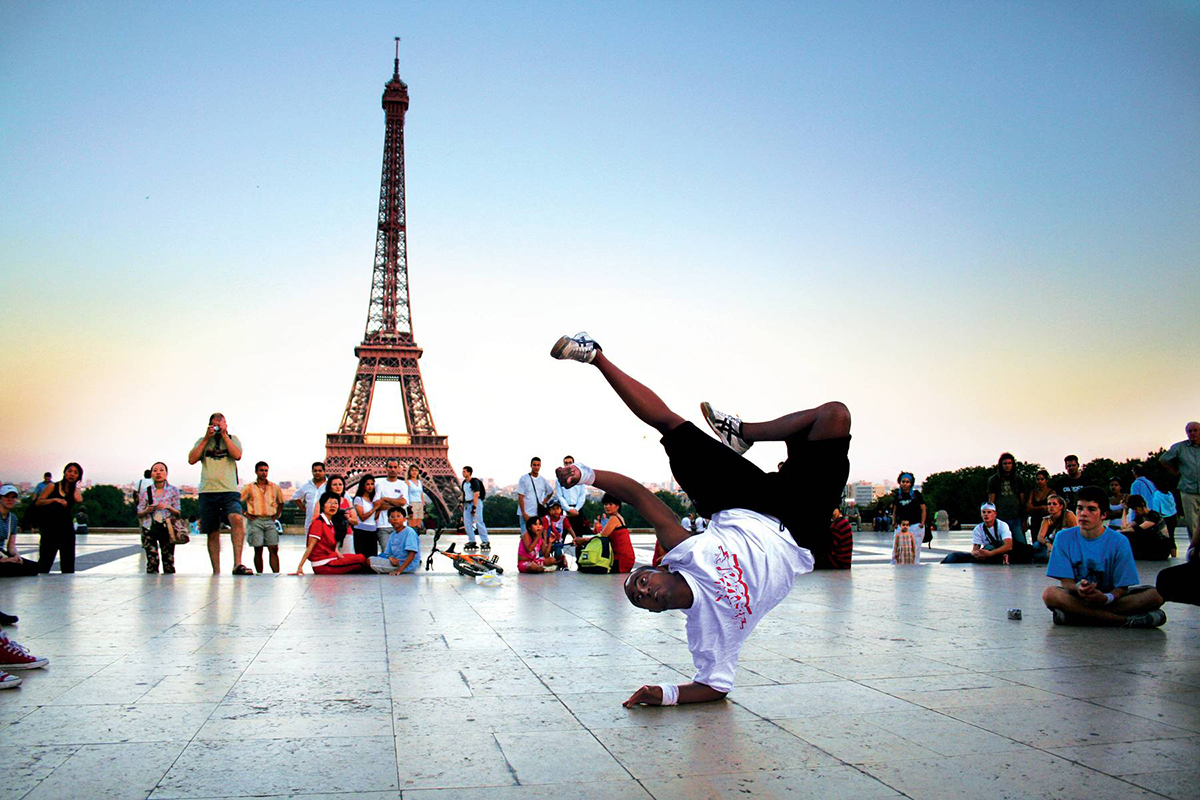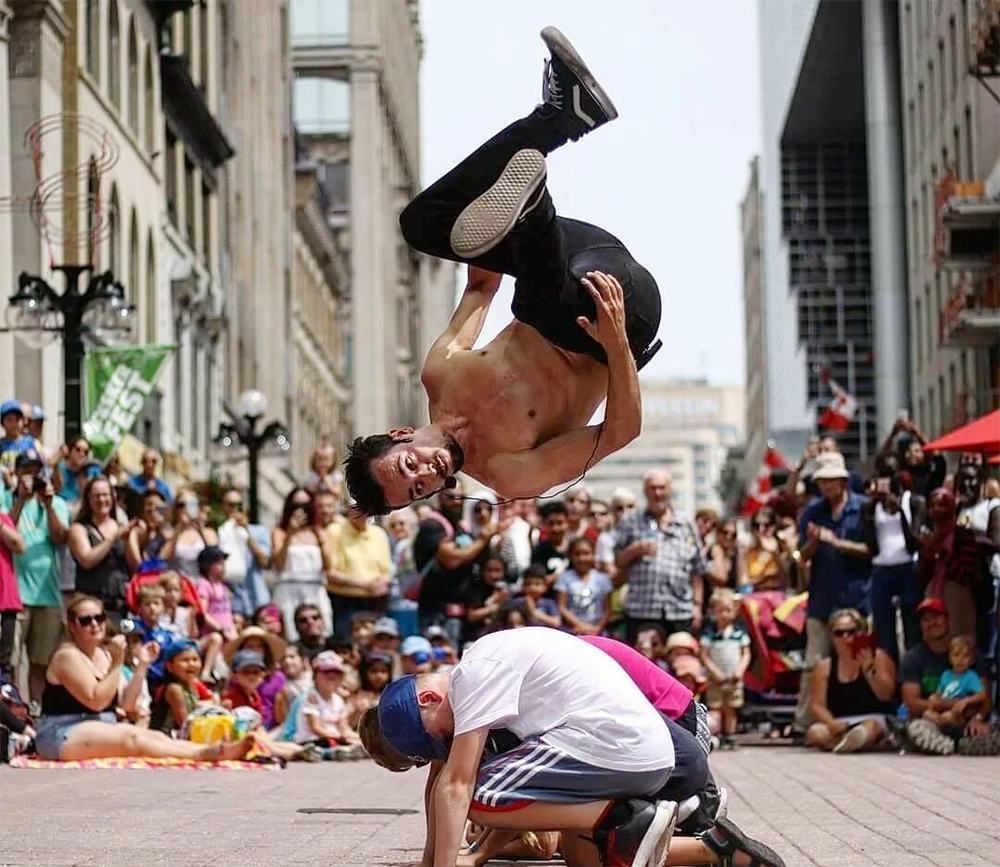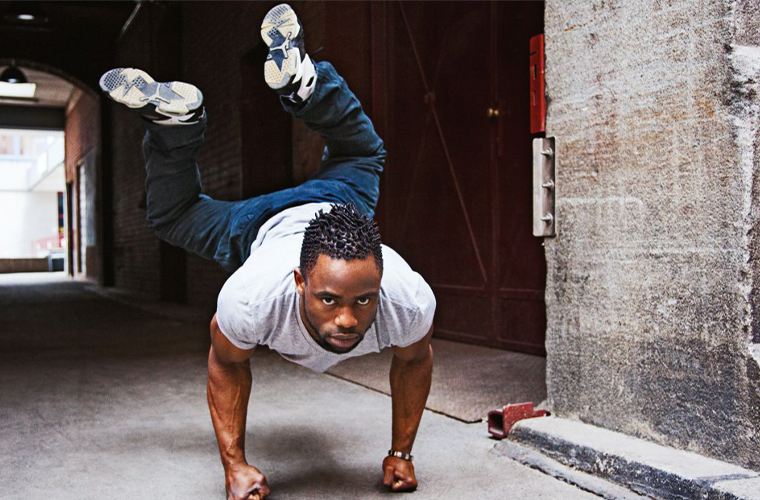B-boying, also known as breakdancing, is a dynamic and acrobatic style of dance that emerged in the streets of New York City in the 1970s. It is a key element of hip-hop culture and has since gained popularity worldwide. B-boying is characterized by intricate footwork, power moves, freezes, and rhythmic athleticism.
The dance style evolved from various influences, including African dance, martial arts, and other street dance forms. B-boying became a means of expression for marginalized communities, particularly African American and Latino youth, who used it as a creative outlet and a way to engage in friendly dance battles.
B-boying consists of different elements and moves. Footwork involves intricate steps and patterns performed on the ground. Power moves are dynamic and physically demanding moves that typically involve spinning, flipping, and balancing on various body parts. Freezes are static poses held mid-movement, often showcasing strength and control.

B-boys and B-girls, the practitioners of b-boying, participate in battles or competitions where they showcase their skills individually, in small groups, or in larger crews. These battles are not aggressive or violent but rather a friendly competition where dancers take turns performing their moves, responding to each other’s styles, and attempting to outdo their opponents in creativity, execution, and showmanship.
Over time, b-boying has evolved, with dancers pushing the boundaries of what is possible in terms of skill and creativity. The dance form has also become more recognized and respected as an art form, with competitions, international events, and professional b-boy crews gaining prominence.

B-boying continues to have a strong influence on popular culture, with its presence in music videos, movies, and commercials. It serves as a platform for self-expression, community building, and personal development. Many dancers use b-boying as a way to express their individuality, connect with others, and contribute to the rich tapestry of hip-hop culture.

